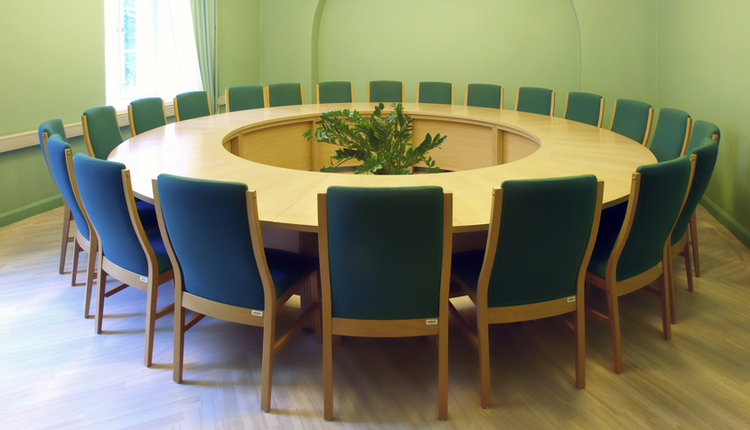
As fitness professionals, program design to preserve muscle mass and strength while offsetting sarcopenia is a natural tendency. While strength training is essential, it is only half of the equation. While we emphasize muscle output, we often overlook the input systems that guide every movement. Balance, reaction and coordination depend on the integration of sensory input and motor output at a subconscious level. Three key inputs include vision, somatosensation and vestibular senses. While all three naturally decline with age, the vestibular system presents an enormous training opportunity. Including specific techniques is essential for fall resilience and sport performance, which become significant concerns for injury prevention among aging athletes. Wondering how to translate such essential neuroscience into program design? This article offers essential insights and provides a key to effective program design.
Understanding Hypovestibular Dysfunction
Hypovestibular dysfunction refers to a decrease in the sensitivity of the vestibular organs within the inner ear. Specifically, the system’s semicircular canals and otoliths detect head motion, position and acceleration, which are crucial for maintaining balance through gaze stabilization. In the aging process, the vestibular hair cells and neural conduction degenerate. By age 70, up to 40% of the vestibular hair cells may be lost. This leads to a slowing of the subconscious processing needed to maintain balance. Athletes begin to show a decreased ability to maintain proper posture, slower reaction times, and instability during dynamic movements. Aging athletes often report feeling off balance, particularly with quick direction changes, or feeling like their body is moving faster than their brain can control. Fitness professionals may notice a client’s overreliance on vision, lack of neck motion, or slowing of rapid movement reactions. Left unchecked, these feelings often progress to dizziness and vertigo. On the positive side, fitness professionals’ program design choices can usually reverse these signals.
Program Design for Hypovestibular Dysfunction
Designing effective programs can be viewed as an equation: balance = sensory input + motor output + brain integration. When the sensory input falters, even well-trained muscles cannot react. Training only output is like strengthening a car’s engine while ignoring the steering system. The key to both high performance and fall prevention lies in retraining both. The program design to improve vestibular dysfunction can be broken into five progressive steps.
Step 1: Train VOR — Start with vestibulo-ocular reflex (VOR) and head-body coordination exercises. The nervous system adapts to short bouts of input, so keep drills to 30-60 seconds for 3-5 reps.
- Gaze stabilization via the vestibular ocular-reflex: Fix eyes on a stationary target while turning the head horizontally or vertically.
- Head motion balance: Maintain posture while rhythmically nodding or shaking the head.
- Eyes-closed stances: Two-leg, tandem or single-leg balance with eyes closed reduces visual dominance and heightens vestibular training.
Step 2: Challenge somatosensation — Once the client feels stable with the basics, progress to challenging somatosensory input. Somatosensory training focuses on the brain’s perception of increasingly unstable surfaces. Progressions can include:
- Progress surfaces: firm → foam → unstable → dynamic.
- Change stance base: wide → narrow → tandem → single-leg.
- Incorporate gentle perturbations via gentle nudges, taps or concurrent exercise with elastic bands
Step 3: Add dual-tasking — Layer in dual-tasking and increase cognitive demand. Most falls happen when attention is divided. Practical training relies on progressing to dual and multi-tasking conditions. Examples include:
- Count backward by threes or recite words while balancing.
- Respond to auditory or visual cues during movement drills.
- Catch a ball, volley a balloon or track a moving target while performing agility patterns.
Step 4: Progress speed — Vestibular decline slows reaction times, which is a major predictor of falls. Integrating drills that focus on scaling speed and unpredictability enhances the aging athlete’s function while decreasing fall risks when playing their sport. Fitness professionals can enhance training safety by starting with short, predictable and slow-to-moderate speed drills before progressing to speed and pattern randomization. Sample activities include:
- Light or sound cue drills: Respond to light flashes, colors or auditory cues.
- Partner reaction games: Quick tap, mirror movements or color-cued direction changes.
- Dynamic agility: Ladder drills or cone weaves with head turns or gaze shifts.
Step 5: Progress planes — The vestibular system responds to acceleration and rotation in all motion planes. Full retraining requires head movement in all three planes, starting with slow, controlled motions and then progressing to speed and range within the athlete’s structural capabilities.
• Begin with sagittal (forward–backward) head motion.
• Add frontal (side-to-side) and transverse (rotational) movements.
• Incorporate multidirectional head turns during lunges, medicine ball throws or gait drills.
Integrated Program Design
Vestibular training does not replace the other elements of program design; instead, it enhances them. From a practical perspective, gaze stabilization and head motion drills can be incorporated during a 5-10 minute dynamic warm-up. Vestibular challenges can be incorporated into strength or cardio stations. The cool-down serves as an excellent opportunity for eyes-closed or single-leg balance drills as athletes work through post-workout fatigue to reinforce sensory adaptation. Ultimately, the goal is neuroplasticity, which is a long-term change in brain function. Achieving neuroplasticity can be accelerated with daily exposure, which could include client homework.
Safety Considerations
While program design to strengthen the vestibular system can enhance sport performance and decrease fall risk, fitness professionals must keep a few safety elements in mind. First, exercises should be scaled for each individual’s abilities and medical allowances. Second, fitness professionals should be mindful of the environment and closely supervise clients to minimize the risk of unexpected falls. Third, if clients report dizziness, nausea or visual changes, exercises should be stopped. In repeated or persistent situations, evaluation by a medical provider is necessary. Many underlying medical conditions can contribute to an athlete’s sense of instability, and fitness professionals may be on the front lines of detection and referral. Ultimately, however, training both nervous system output and input builds athletes who can move confidently, react quickly and resist falls. Enhancing athleticism with age hinges on long-standing words of wisdom: the body can only respond to what it can sense.
Dr. Meredith Butulis, DPT, OCS, CEP, CSCS, CPT, PES, CES, BCS, Pilates-certified, Yoga-certified, has been working in the fitness and rehabilitation fields since 1998. She is the creator of the Fitness Comeback Coaching Certification, author of the Mobility | Stability Equation series, Host of the “Fitness Comeback Coaching Podcast,” and Sports and Orthopedic Physical Therapist serving Sarasota Memorial Health Systems. She shares her background to help us reflect on our professional fitness practices from new perspectives that can help us all grow together in the industry. Instagram: @doc.mnb




















